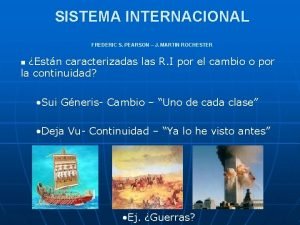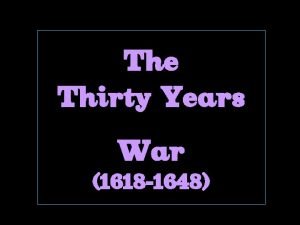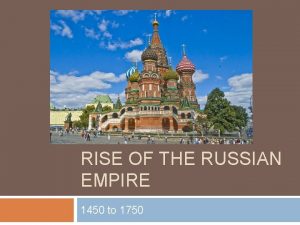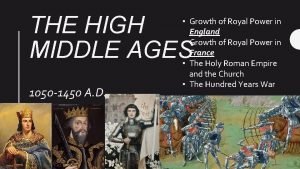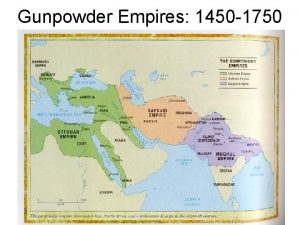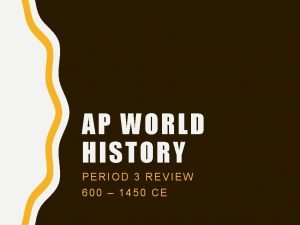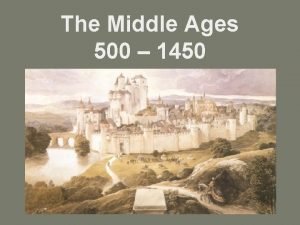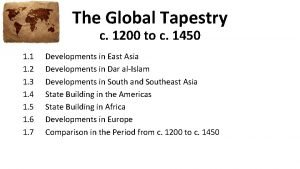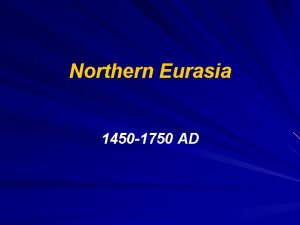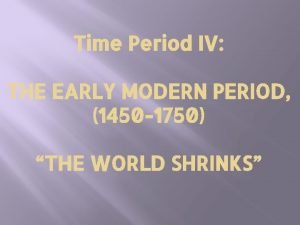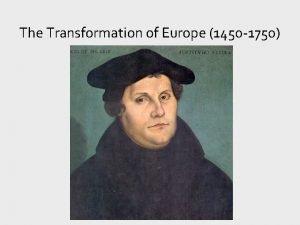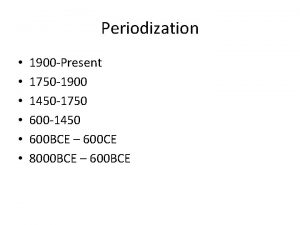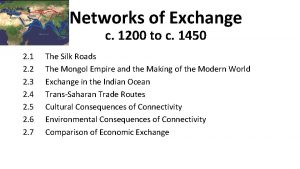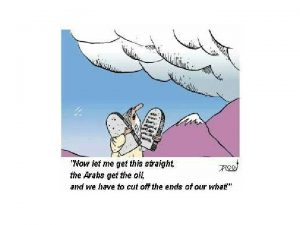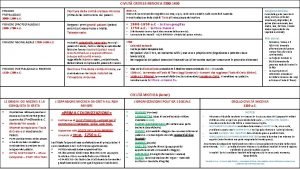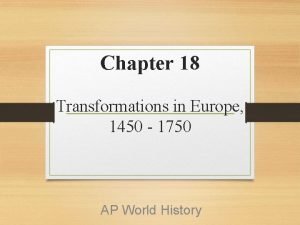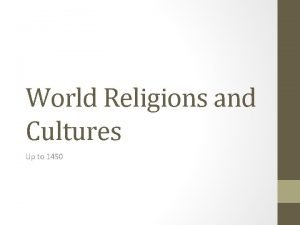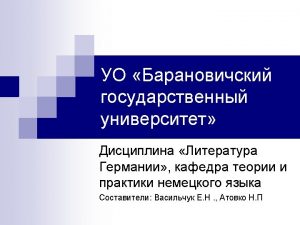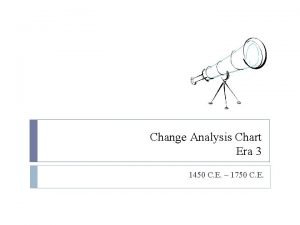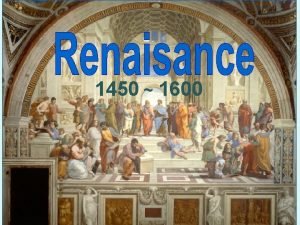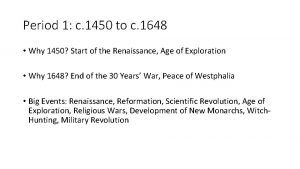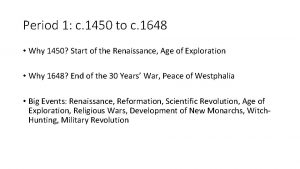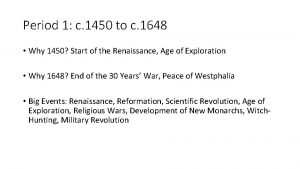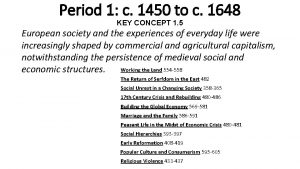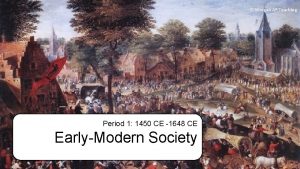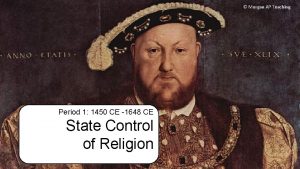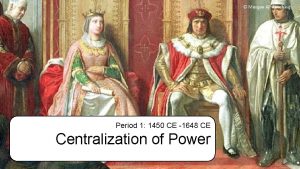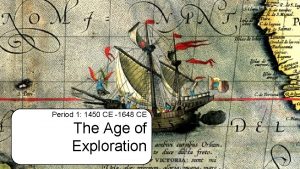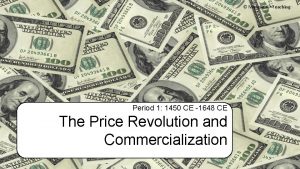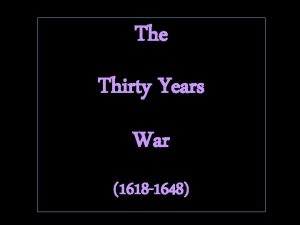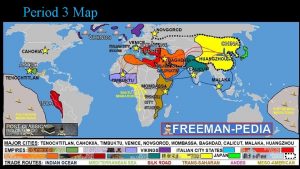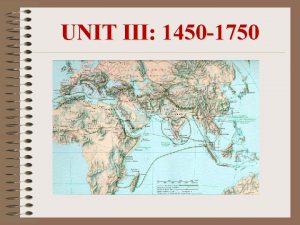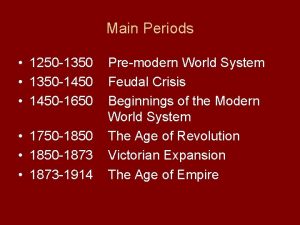ART PERIOD 1 1450 1648 New Techniques in































- Slides: 31

ART!!! PERIOD 1 1450 -1648

New Techniques in Art Painting • Perspective • Chiaroscuro • Human emotion • sfumato Sculpture • Free-standing • contrapposto • Idealized human form; nudes • Greco-Roman motifs Architecture • Greek temple architecture • Simplicity, symmetry, harmony, balance

Sandro Botticelli (1444 -1510) • Venus is central figure, symbolizing Humanitas: embodiment of the ideal • Ideal of nature: springtime • Hung in Medici house Savonarola changed Botticelli’s work to reflect piety over sensuality Primavera, 1482

Botticelli Birth of Venus, 1485 -87 Venus and Mars, 1483

Raphael (1483 -1520) Pope Julius II commissioned School of Athens Four branches of human knowledge: Theology Law (Justice) Poetry Philosophy (School of Athens) Plato & Aristotle central figures Aristotle: concerned with nature and human affairs Plato: ancient philosophers, mysteries that transcend this world

Michelangelo (1475 -1564) • Primarily a sculptor: believed every block of marble contained perfect form within it • Platonist • Sought the ideal • Loyal Christian • Use of contrapposto – an asymmetrical arrangement of the human figure in which the line of the arms and shoulders contrasts with while balancing those of the hips and legs. David, 1504

Pieta, 1498 -99 St. Peter’s Basilica, 1546

The Last Judgement, 153441

Sistine Chapel, 1508 -12 Moses (for tomb Julius II), 151315

Venetian School: Titian (1485 -1576) The Ascension, 1516 -18 Bacchus and Ariadne, 1520 -23

Mannerism Art • Compositions can have no focal point, • space can be ambiguous, • figures can be characterized by an athletic bending and twisting with distortions, exaggerations, an elastic elongation of the limbs, bizarre posturing on one hand, graceful posturing on the other hand, and a rendering of the heads as uniformly small and oval. • The composition is jammed by clashing colors, which is unlike what we’ve seen in the balanced, natural, and dramatic colors of the High Renaissance. • Mannerist artwork seeks instability and restlessness.

Mannerism Characteristics: • Reaction against Renaissance ideals of balance, symmetry, simplicity, and realistic use of color – Rebellion against “perfection” of High Renaissance • Used unnatural color, shapes irregular • Bridge between High Renaissance & Baroque https: //www. britannica. com/art/Mannerism El Greco (1541 -1614) Burial of Count Orgaz, 1586 -88

Tintoretto Last Supper, 1594 Arcimboldo "Vertemnus” ca 1590

Baroque Art • Stormy. • exceedingly emotional • more dynamic than earlier styles. The period is identified as encompassing an art of passion and theatrical displays. It is : – Forceful – Brilliant – Tense – Bursting with energy – Sensual – Extravagant

Baroque Art 1. Italian Baroque artists embraced a more dynamic and complex aesthetic. 2. …dramatic theatricality, grandiose scale, and elaborate ornateness…characterized … the art and architecture. 3. Baroque art production further suggests the role art played in supporting the aims of the [Catholic] Church. -Gardner’s Art Through the Ages, 11 th Ed. Bernini, baldacchino, 1623 -24, St. Peter’s, Vatican City. Bernini, Trevi Fountain, 1629 -1762, Rome.

Bernini, David, 1623, Galleria Borghese, Rome. Artemisia Gentileschi, Judith Slaying Holofernes, 1614 -20, Uffizi, Florence, Italy.

Baroque Sculpture and Architecture Italy: Gian Lorenzo Bernini (1598 -1680) • A Counter Reformation Catholic • Inspired by Caravaggio • Sculptor • Greatest imprint on city of Rome than any other artist Piazza Navona: Fountain of the Four Rivers

Bernini Saint Peter’s Square Baldacchino

Bernini Trevi Fountain David

Ecstasy of Saint Teresa by Bernini

Italian Baroque Painting 1. 2. 3. Baroque art reaches out to people and provokes action; designed to give spontaneous personal experience. Baroque paintings are filled with dramatic movement, striking contrasts of light and dark, vivid colors, and earthly realism. Baroque artists depicted the heroic acts of martyrs and saints to inspire the lower classes to accept their own suffering and not lose faith. Caravaggio (1571 -1610) • First important painter of Baroque period • Highly emotional scenes • Use of tenebrism • Considered a realist in an age of idealists • Criticized for use of ordinary, gritty people as models even for religious paintings

Caravaggio Bacchus David with the Head of Goliath

Caravaggio Basket of Fruit Crucifixion of Saint Peter

Northern European Baroque Art Peter Paul Rubens (1577 -1640) • • northern Europe, the Netherlands was divided into two parts: the Northern Netherlands (present day Netherlands) and Southern Netherlands (present day Belgium and part of France), each usually referred to as Holland (North) and Flanders (South). Rubens and his workshop dominated the art of Flanders with the creation of dramatic and powerful religious altarpieces and portraits of the ruling families of Italy and France. Emphasized color and sensuality (nudes as Roman goddesses, nymphs, saints, and angels); melodramatic contrasts; monumental size Mainly Christian subjects Rubenshuis, Antwerp

Rubens The Fall of Man, 1628 -29 The Three Graces, 1635

Rembrandt (1606 -1669) Dutch artist during Dutch Golden Age • Painted in Amsterdam – tolerant city, valued personal privacy, thus unknown if he was Catholic or Protestant • Personal tragedies: wife died, 3 of 4 children died, bankrupt • Known for self-portraits (more than 90), very prolific • Narrow color range: browns, reds, beige. Pinpoint style with light to illuminate a point • Painterly style: layers of paint Self Portrait, 1658

Rembrandt: The Night Watch 1642

Rembrandt Anatomy Lesson of Dr. Tulp 1632 Return of the Prodigal Son, 1669

Baroque Art: Spain Diego Velasquez, 1599 -1660 • Court painter for King Philip IV – Favorite – Moved into palace • Spanish Golden Age • Important portrait artist • Loose brush technique Las Meninas, 1656

Velasquez Philip IV 1632 Los Borrachos 1628

Baroque Music (ca. 1600 -1750) • Highly complex, polyphonic musical texture – Rich, expressive • Use of Church organ, harpsichord • Improvisation Composers: • Bach (1685 -1750) • Handel (1685 -1759) • Vivaldi (1678 -1741)
 Branches of catholicism
Branches of catholicism Sistema internacional clasico
Sistema internacional clasico 1618-1648
1618-1648 Russian empire innovations 1450 to 1750
Russian empire innovations 1450 to 1750 Mughal empire 1450 to 1750
Mughal empire 1450 to 1750 1450 ad
1450 ad Best buy in st george utah
Best buy in st george utah Fur trade 1450 to 1750
Fur trade 1450 to 1750 Cultural exchange between nomads and non nomads before 1450
Cultural exchange between nomads and non nomads before 1450 Land based empires 1450 to 1750
Land based empires 1450 to 1750 Period 3 ap world history
Period 3 ap world history 500/1450
500/1450 The global tapestry from c.1200 to c.1450
The global tapestry from c.1200 to c.1450 Japan 1450-1750
Japan 1450-1750 World map 1450
World map 1450 Europe 1450
Europe 1450 1750-600
1750-600 C-1450-2
C-1450-2 1250 bc
1250 bc Prepalaziale
Prepalaziale Europe map 1750
Europe map 1750 Agean art
Agean art Religion in 1450 to 1750
Religion in 1450 to 1750 Southeast asia 1450 to 1750
Southeast asia 1450 to 1750 St basil's cathedral ap world history
St basil's cathedral ap world history Renaissance 1450 to 1600
Renaissance 1450 to 1600 Poetischer realismus historischer hintergrund
Poetischer realismus historischer hintergrund Change analysis chart 1450 to 1750
Change analysis chart 1450 to 1750 Cynthia lightfoot
Cynthia lightfoot Absolute refractory period and relative refractory period
Absolute refractory period and relative refractory period When is the relative refractory period
When is the relative refractory period Critical period vs sensitive period
Critical period vs sensitive period

